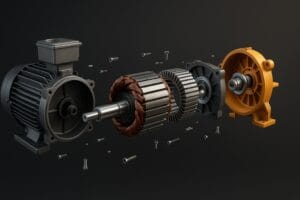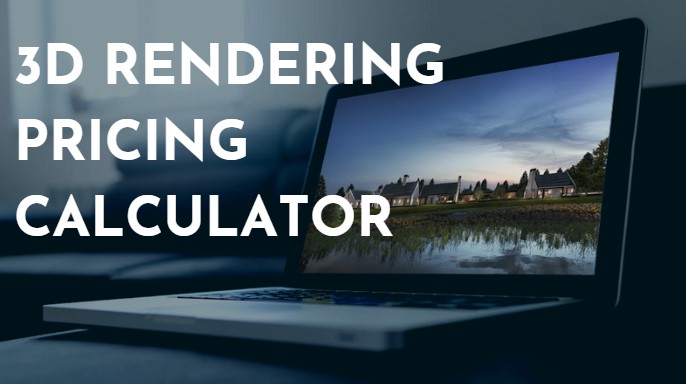In the world of industrial design, clarity and precision are everything. Whether you’re building complex machinery, assembling technical documentation, or presenting a product to investors, your visuals need to do more than look good — they need to communicate.
That’s where exploded view renderings come in. These visuals break a product into its individual components while keeping structure and scale intact. For mechanical products especially, this format reveals how parts interact, how systems are built, and how functionality is achieved — all without overwhelming the viewer.
At NoTriangle Studio, we create machinery exploded view renderings that aren’t just technical — they’re persuasive. They help engineers validate designs, assist manufacturers with assembly, and give marketing teams a way to show depth and detail that goes far beyond the surface.
If you’re not sure what exploded views are and why they matter, we’ve covered that in our foundational guide — but here, we’ll focus on why they’re indispensable for machinery and industrial design.
Key Takeaways
- Exploded renderings help visualize internal components clearly
- They’re ideal for manuals, training, compliance, and sales
- Mechanical designers use them to validate layouts and fit
- They reduce confusion for clients and technicians alike
The Unique Challenges of Industrial Product Communication

Industrial products are often anything but simple. From multi-part enclosures to intricate gear systems, there’s a lot happening beneath the surface — and showing that complexity in a way people can actually understand is a challenge.
Traditional photography can’t capture internal structure.
Even with perfect lighting and staging, a photo of the exterior tells only part of the story. Clients don’t just want to know what a product looks like — they need to understand how it works.
Miscommunication leads to real-world consequences.
If a technician misreads a flat schematic or a customer misunderstands a feature, the result could be wasted time, improper installation, or product returns.
CAD software isn’t client-friendly.
Most stakeholders — especially in procurement, sales, or marketing — don’t have access to CAD tools or the skillset to interpret engineering models. They need visuals that bridge the technical and the accessible.
As Scott Morris, PLM Platform Manager at Peloton, notes:
“An exploded view can help the reader quickly understand the outer and inner workings of a design, quickly identify the assembly or disassembly procedure or quickly identify a component in the assembly that may not be visible otherwise.”
Source
This is exactly where exploded view renderings shine. They’re detailed, precise, and far more intuitive to interpret — even for non-technical viewers.
Where Exploded Views Fit in the Product Lifecycle

Exploded view renderings aren’t just for final presentations — they can support nearly every stage of a product’s journey, from initial prototyping to post-sale support. Here’s how they fit in at key touchpoints:
Prototyping & Design Validation
Engineers and industrial designers use exploded views to check component fit, identify spatial conflicts, and validate assembly sequences before production. These visuals act as a bridge between CAD models and practical manufacturing insight.
Learn how this kind of visualization can also accelerate your production timeline in our guide on reducing time to market with 3D rendering.
Internal Documentation & Quality Assurance
Clear, detailed renderings help QA teams and assembly line workers follow correct build procedures. Because each component is visualized in context, there’s less room for interpretation — and fewer errors in the field.
Client Presentations & Demos
When pitching to investors or presenting to clients, exploded view renderings showcase a product’s depth and innovation without diving into raw technical files. It’s a clean, digestible way to communicate value — fast.
Aftermarket Manuals & Repair Guides
Exploded views are a natural fit for manuals, especially when end users or technicians need to replace components or perform maintenance. They offer clarity without requiring prior engineering knowledge.
Whether you’re in early-stage development or supporting a product in-market, machinery exploded view renderings help communicate function, structure, and value at every step.
Why Photorealism Matters in Industrial Sales

It’s easy to assume photoreal rendering is just for consumer products or glossy ad campaigns — but in industrial contexts, realism can be just as powerful. When you’re selling high-value machinery, hardware, or technical components, trust matters. And visuals help build that trust.
Show Materials and Build Quality
Photorealism allows you to clearly communicate material finishes, coatings, and textures — whether it’s brushed steel, powder-coated aluminum, or medical-grade polymers. These aren’t just aesthetic details; they’re functional selling points that speak to durability and compliance.
Reinforce Product Integrity
When a product looks solid, well-constructed, and thoughtfully assembled, stakeholders notice. Photoreal product design exploded views don’t just show how it’s built — they show why it’s worth investing in.
Win Over Non-Technical Buyers
Procurement teams and investors may not understand CAD files or engineering blueprints, but they do respond to clarity. A beautifully lit, exploded rendering with clean labeling gives them confidence — especially when paired with a more traditional spec sheet.
At NoTriangle Studio, we specialize in bridging technical design with compelling presentation. Our professional 3D rendering services are tailored for industrial teams who need both precision and persuasion.
Case Examples: Industrial Exploded Views in Action
To understand the true impact of machinery exploded view renderings, it helps to see them in action across real-world scenarios. Here are a few typical applications that highlight their versatility and value:
Manufacturing Equipment
In heavy industry and fabrication, exploded views illustrate how large machines are assembled — from drive systems and control units to base plates and housings. These visuals are often used in training, sales brochures, and safety documentation to ensure every part is accounted for and understood.
HVAC Systems
Heating, ventilation, and air conditioning units contain multiple ducts, sensors, fans, and control modules. A photoreal exploded view helps technicians understand airflow paths, access panels, and internal layouts — especially useful for installation manuals or maintenance training.
Electronics Enclosures
For ruggedized electronics, server racks, or handheld industrial devices, exploded renderings show more than just circuit boards. They highlight gaskets, thermal shielding, button membranes, and connectors — all critical when showcasing build quality and component integration.
These aren’t just nice-to-have visuals — they’re practical communication tools. And in complex sectors like industrial manufacturing, that clarity can make the difference between a good idea and a successful product.
Pairing Exploded Views with Component-Level Visualization

While exploded views are great for showing how an entire machine fits together, sometimes you need to zoom in further. That’s where component-level visualization comes into play.
Think of it as the next layer of clarity. Once a stakeholder understands the full assembly, they might need to dive deeper — into a gear housing, a control board, or a valve mechanism. Pairing exploded views with focused component visuals allows you to move from macro to micro storytelling seamlessly.
When to Zoom In
- To highlight mission-critical parts that require certification or maintenance
- To isolate frequently replaced components for service manuals
- To explain performance advantages or engineering innovations to buyers
By combining both styles, you create a flexible communication toolkit. High-level exploded views for structure. Detailed component visuals for precision.
We explore this idea further in our deep-dive on component-level design visualization, where we show how these visuals help engineers and marketers communicate on the same wavelength.
Want to see how others are using exploded views?
Check out real-world exploded product visualizations on Behance.
Conclusion: Clarity That Powers Performance
For industrial teams, exploded view renderings aren’t just technical visuals — they’re communication power tools. Whether you’re explaining assembly to technicians, pitching to investors, or guiding QA teams through inspection workflows, these renderings provide the kind of clarity that keeps projects moving and mistakes to a minimum.
In machinery and industrial design, complexity is a given. But confusion doesn’t have to be. By visualizing your product’s internal logic — with precision and visual finesse — you turn complicated systems into compelling stories.
At NoTriangle Studio, we help industrial clients translate detailed CAD data into clean, impactful visuals. We blend photorealism with structural insight to deliver renderings that serve real business goals — from design to delivery.
If you’re new to this space, we recommend starting with our guide on what exploded views are and why they matter. Or, if you’re ready to elevate your own visuals, check out our professional 3D rendering services.
Want to explore more techniques? Explore the full series on 3D visualization techniques.
FAQs
Yes. Exploded view renderings are widely used in step-by-step training guides to show how machinery should be assembled, disassembled, or maintained. They simplify complex sequences and reduce error rates on the shop floor.
We can deliver high-resolution still images (JPG, PNG), vector-based assets (SVG), interactive 3D formats (USDZ, GLB), or animation files (MP4). The format depends on how and where you’ll use the asset — web, print, AR, or video.
Absolutely. While not a substitute for formal CAD validation, exploded renderings help teams review spacing, fit, and part relationships in a more intuitive format — especially useful in cross-functional meetings.
Turnaround depends on complexity, detail, and format. For most industrial products, expect 1–3 weeks from project kickoff to delivery — faster if CAD files are clean and reference materials are ready.
Absolutely. Exploded isometrics often work best when they’re part of a wider system of visuals—hero shots, technical breakdowns, and interactive assets all working together.









